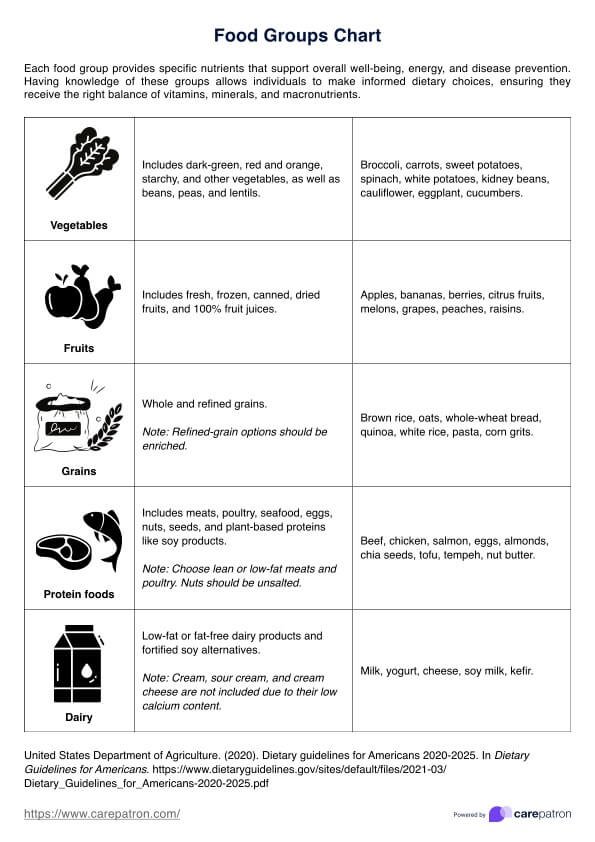Food groups provide essential nutrients that support overall health and well-being by ensuring a diverse intake of vitamins, minerals, and other nutrients.

Food Groups Chart
Help clients achieve optimal health with balanced nutrition. Guide them to enjoy diverse foods in moderation using the Food Groups Chart for lasting well-being.
Use Template
Food Groups Chart Template
Commonly asked questions
The recommended servings vary depending on age, sex, and activity level. However, aim for various foods from each group throughout the day.
While each food group offers valuable nutrients, it's essential to consume various foods from all groups to ensure a well-rounded intake of nutrients.
EHR and practice management software
Get started for free
*No credit card required
Free
$0/usd
Unlimited clients
Telehealth
1GB of storage
Client portal text
Automated billing and online payments











